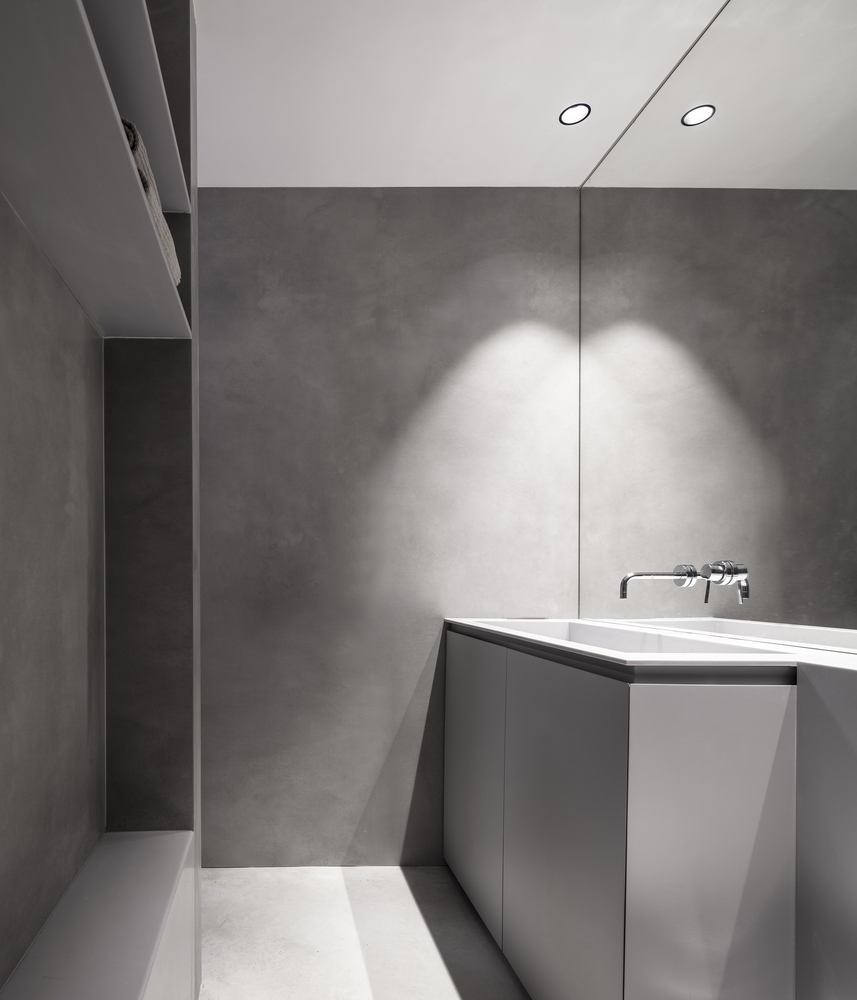Shanghai MOCA Atelier Liu Yuyang Architects
2014-08-26 01:00
© Jeremy San
(杰里米·桑)


架构师提供的文本描述。上海MOCA的故事讲述了建筑“灰姑娘”-一个废弃的花坛-是如何转变成当代艺术的“公主”的。在这种情况下,建筑师的角色更像是一个“化妆艺术家”。
Text description provided by the architects. The story of the Shanghai Moca is about how the architectural “Cinderella”—an abandoned flower pavilion—was transformed into a “Princess” of contemporary art. The role of the architect in this case was more akin to that of a “make-up artist”.
© Jeremy San
(杰里米·桑)


上海MOCA的设计与其说是为了建立一个新的宣言,不如说是为了利用二元性的概念,在现有形式和新意图之间进行调解。最初的结构是一座未被利用但在结构上符合结构的玻璃和混凝土建筑。引进了一系列几何玻璃体积,以取代主入口和延伸部分的三楼,消除了原来的玻璃展馆的可预测的形式。在现有的混凝土建筑上,对角线铺设的“蒙氏黑色”石板给出了一种非常柔和但又有区别的表达方式,这是由于深凹的不锈钢窗框故意不对齐而凸显出来的。由此产生的工程既不能定义为一座新的建筑物,也不能仅仅是一种补充。
The design of the Shanghai MOCA was so not much about establishing a new manifesto, but instead to exploit the notion of duality, mediating between an existing form and new intentions. The original structure was an un-utilized but structurally in-tack glass and concrete building. A series of geometric glass volumes were introduced to replace the main entrance and to extend part of the third floor, dissolving the predictable form of the original glass pavilion. The diagonally-laid “Mongolian Black” stone cladding over the existing concrete building gives a much subdued yet differentiated expression, highlighted by the deep-recessed stainless steel window frames that are intentionally mis-aligned. The resulting work could neither be defined as a new building, nor a mere addition.


新的程序介于艺术展览的需求-对普通白色盒子的需求,以及对适当建筑表达的渴望-一种颂扬建筑内在品质的要求,无论是构造、空间、结构还是材料。坡道的设计就是这样一个例子。由于采用了一个优雅的结构模型,坡道以最大跨度将两层主展厅与最低限度的钢使用量(不足3吨)连接起来,产生了一个横扫曲率,在现有钢筋混凝土柱之间以不同的切线关系“舞蹈”,并允许对放置在主展览空间中心的大型设施进行限制和上升观看。
The new program mediates between the requirements for art exhibition—the need for a generic white box, and the desire for an appropriate architectural expression—one which celebrates the intrinsic quality of architecture, be it tectonic, spatial, structural, or material. The design of the ramp is one such example. Thanks to an elegantly resolved structural model, the ramp connects the two principal exhibition floors at a maximum span with a minimum usage of steel (just under 3 tons), producing a sweeping curvature that “dances” through the existing reinforced concrete columns in different tangential relationships, and allows for a circumscribed and ascending viewing of large-scale installations placed in the center of the main exhibition space.
© Jeremy San
(杰里米·桑)


新博物馆介于风景和城市之间。由于它在人民公园内的独特位置,游客们必须在“无产者花园”中蜿蜒而行,才能到达更接近城市外部消费主义性质的机构。玻璃展馆和三楼屋顶甲板的玻璃幕墙大部分是通透的,把公园的景色和城市的形象结合在一起。在这里,建筑作为一个花卉亭的前功能是在某种程度上重新体现出来的;新建筑没有容纳这些花,而是让游客从画廊、咖啡厅和太阳甲板上看到公园里茂盛的植被。
The new museum mediates between landscape and city. Because of its unique location within the People’s Park, visitors are required to meander through the ‘garden of the proletariats’ before arriving at the institution that is paradoxically more akin to the consumerist nature of the city outside. The largely unobstructed glazing of the glass pavilion and the roof deck of the third floor bring together a view of the park with the images of the city. Here the former function of the building as a flower pavilion is somewhat re-incarnated; instead of housing the flowers, the new building affords the visitors a view of the Park’s lush vegetation from its galleries, café, and sun deck.
Axonometric


这座建筑介于隐喻和现实之间。宝石,隐形轰炸机,解构拼贴符合极简主义;这是一些可能的隐喻性描述的项目。然而,采纳通过建筑物本身正在出现的现实的观点要有趣得多。事实上,有一个多重的现实,与孔的艺术展览,城市正在建设,花园寻求庇护。当建筑最终成为城市的一部分时,艺术如何影响一个人的生活不再局限于有形的“展览”空间。相反,博物馆作为一个机构是如何为城市的新文化奠定基础的。这座建筑除了提供雨和阳光的庇护外,还能提供活动的可能性和创造一种真正的文化。
The building mediates between metaphor and reality. A gem, a stealth bomber, a collage of deconstruction meets minimalism; these are some of the possible metaphoric descriptions of the project. However, it is far more intriguing to adopt the views of a reality that is emerging through the building itself. There is in fact a multiple reality, with apertures to the art exhibited, the city being constructed, and the garden to be sought refuge in. When the building finally becomes a part of the city, how the art affects one’s life is no longer limited to the physical “exhibition” space. Rather, it’s how the museum as an institution lays the ground for a new culture of the city. What the building can provide, besides a shelter for rain and sun, is the possibility of the events and the creation of a genuine culture.
© Jeremy San
(杰里米·桑)






























































Architects Atelier Liu Yuyang Architects
Location People's Park, 231 Nanjing West Road, People's Square, Huangpu, China, 200000
Category Adaptive Reuse
Design Team Liu Yuyang, Keith Yee, Tynnon Chow, Larry Tsoi
Area 3900.0 sqm
Project Year 2009
Photographs Jeremy San
























